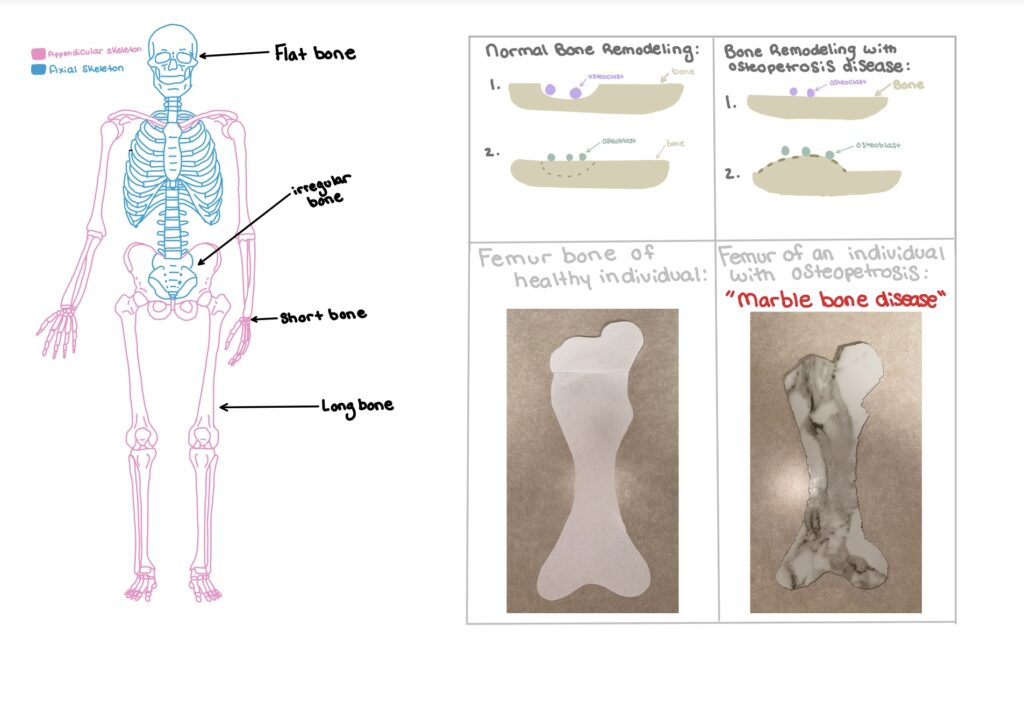Osteopetrosis, “the marble bone disease” affects about 1 in 100,000 to 500,000 individuals each year. Osteopetrosis is a rare disorder that causes bones to grow abnormally and become overly dense. When these bones become overly dense, or “marble-like” they become brittle and can fracture easily. During bone remodeling, the old bone is removed or resorbed by the osteoclast cells, and osteoblasts form new bone. However this process does not work for individuals with osteopetrosis. Instead, the old bone is not removed or resorbed, as the new bone is formed.
**There is suppose to be a video included in this post, but WordPress won’t allow me to upload, so here is the material that was included in the video:


Amara’s steam presentation is on Osteopetrosis and the statistics on how many people it affects every year. Amara describes osteopetrosis as marble – like and because of its density it causes the bones to become brittle and this makes it easy to break/ fracture the bones. Amara did a good job explaining the difference between osteoclasts and osteoblasts and when they are not working in harmony during bone remodeling osteopetrosis could be the outcome. The other outcome is osteoporosis. Osteoporosis is the opposite and has the formation of too little bone instead of too much. Amara explained through a video how this process works and the proper way bones should remodel in a video that would not load onto the website, so as an alternative Amara showed us the materials used in the video. In the photograph there is a picture of the human skeleton locating the axial and appendicular bones. Flat, irregular, short, and long bones. The next picture shows how a bone is supposed to look with the absorption of the osteoclasts and the osteoblasts. The third picture shows how the bones are affected during osteopetrosis and how the osteoblasts and osteoclasts are not functioning in their proper manner. The fourth is a model of how the femur is supposed to look healthy and the fifth picture is how the bone would look with osteopetrosis. Amara was descriptive and gave the information while showing how the bones were affected. Amara gave good examples of the osteoclasts and osteoblasts and the way they should function and the way they shouldn’t.
Good job Amara!
JH